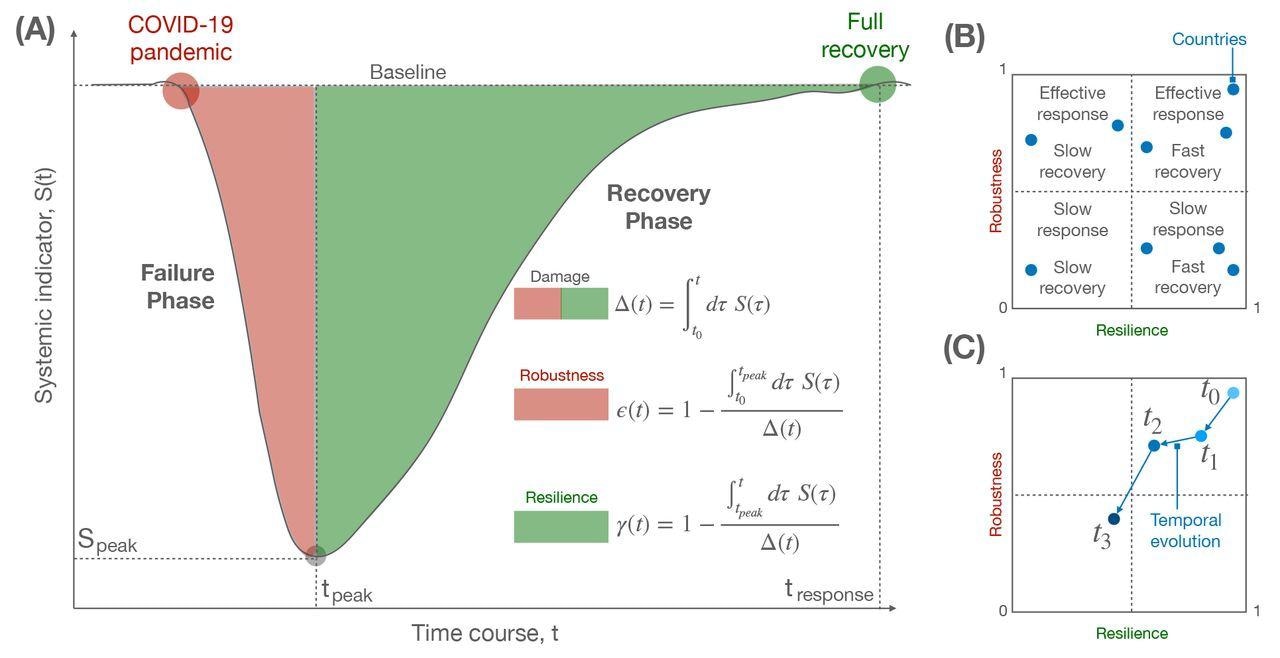At the beginning of the coronavirus disease 2019 (COVID-19) pandemic, a number of non-pharmaceutical interventions (NPIs) were introduced to help reduce the spread of the severe acute respiratory syndrome coronavirus 2 (SARS-CoV-2). While these measures did completely mitigate the size of the outbreak, they imposed a significant load on social, economic, and educational systems that caused suffering worldwide.

Study: Proactive vs. Reactive Country Responses to The COVID-19 Pandemic Shock. Image Credit: ETAJOE / Shutterstock.com
Background
The high reproduction number of SARS-CoV-2, at 2-3.5, meant that it spread extremely fast at the community level that was enough to overwhelm healthcare capacities in the most developed countries. This was exacerbated by the lack of effective antivirals, medical treatments, and vaccines.
As a result, NPIs were implemented and ranged from physical distancing when outside one’s own household, mask use in public, school and business closures, as well as national lockdowns with international travel bans.
Many researchers examined the effectiveness of such measures and compared them singly or in combination to identify the most useful among them. It came to light that some countries reacted to the spread of the virus weakly by simply contriving makeshift measures to keep healthcare functioning while still allowing viral transmission. This is called a reactive response.
Conversely, some nations acted proactively, wherein they devised strategies to keep ahead of rising case counts by plotting the course required to prevent transmission. This approach is otherwise known as an elimination strategy.
The current study aimed to evaluate both types of response to identify which is more appropriate in terms of sparing the country the worst of the impact.
Study findings
The health, social, and economic systems in any country are closely related and were therefore referred to as a system of systems by the authors of the current study. Any disrupting influence can spread through the system and change the way it functions, or the outcome, multiplying as it goes.
Thus, a change at a later time will be more radical in its effects than an earlier alteration. This will cause a rapid decline in the value of the systemic indicator that reflects the systemic function, S(t).
 Modeling the response of a complex system to a shock. (A) Schematic of changes in a complex system – e.g., the economy of a country – as quantified by a systemic indicator – e.g., the change in GDP growth – undergoing a decrease, corresponding to a failure phase, and an increase, corresponding to a recovery phase, after a shock like COVID-19. The shaded areas under the curve allow to define a measure of robustness and resilience, which can be used to quantify the response of a country. (B) The two indices are scattered to define 4 distinct types of response within a fixed temporal window, combining effective or weak robustness with fast or slow resilience. (C) Similar to (B), but considering the temporal evolution of the two indices for a given country, allowing to monitor the trend of the system over time.
Modeling the response of a complex system to a shock. (A) Schematic of changes in a complex system – e.g., the economy of a country – as quantified by a systemic indicator – e.g., the change in GDP growth – undergoing a decrease, corresponding to a failure phase, and an increase, corresponding to a recovery phase, after a shock like COVID-19. The shaded areas under the curve allow to define a measure of robustness and resilience, which can be used to quantify the response of a country. (B) The two indices are scattered to define 4 distinct types of response within a fixed temporal window, combining effective or weak robustness with fast or slow resilience. (C) Similar to (B), but considering the temporal evolution of the two indices for a given country, allowing to monitor the trend of the system over time.
At this point, the system is in failure, as shown by the carrying capacity that includes the potential for damage to limited finite resources. At failure, propagation stops due to the consumption of all resources or due to the adoption of mitigation measures. Now, the S(t) is at its lowest, before increasing again, which is an indicator that restoration is taking place.
Here again, a single intervention for recovery catalyzes future interventions in the system. The authors developed equations to account for these factors, wherein they established definitions for system robustness and resilience.
Systems that fail to show much change when undergoing a shock are robust, whereas those that instantaneously recover to earlier functions are resilient. These properties can be correlated to help delineate the responses of various countries over time.
The researchers examined multiple country-level indicators: eight of closure, six of education, Google mobility data-based behavioral index, and an economic index from the United States Organization for Economic Co-operation and Development (OECD) Weekly Tracker. The cumulative mortality due to this virus in the total population is then converted into deaths per million.
“Our measures of robustness and resilience are computed from a shock index built on government, health, economic and behavioral indicators combined together by iterative convolutions.”
By way of illustration, the researchers used their mathematical operation to examine the shock value in New Zealand (NZ) and Italy. The absolute shock value index was three orders of magnitude higher in robustness and resilience in NZ. They then explored the same index for all the countries in their dataset.
Most countries were reactive and were easily outperformed for these two characteristics of a healthy response by the few proactive countries. While a few countries with reactive strategies did perform almost as well as proactive countries, over time, the latter won out in their consistently higher performance.
The outcomes with reactive countries are also not predictable, with different results for different countries. In Europe, where most nations went reactive, the Scandinavian countries performed better than the Mediterranean ones.
Socioeconomic development is also not a significant contributor, with India, among the low- and middle-income countries of the world, showing a better performance than either the highly developed United States or Brazil.
Implications
“The fact that our model, leading to the shock function, perfectly reproduces the behavior of the comprehensive shock index, provides interesting insights about the mechanisms – based on multiplicative growth processes – behind systemic failure and recovery of a country in response to external shocks such as the COVID-19 pandemic.”
The authors point out some clear takeaways including that proactive planning for such crises as pandemics always performs better than reactive ones. To this end, proactive planning prevents viral transmission and limits the expansion of pandemic-related adverse effects.
While the authors expected that the most robust strategies would suffer from lower resilience, this is not the case, with almost perfect correspondence between these two facets. Thus, countries can be ranked based on their shock function performance, even though more conventional ranking factors like socioeconomic development.
Proactive strategies can be undertaken only by governments that are strong and socially responsible, which is a somewhat rare phenomenon today unless targeted improvements occur. These should, perhaps, be the focus for the future, given the clear demonstration by this study that proactive policies are beneficial for the country.
*Important notice
medRxiv publishes preliminary scientific reports that are not peer-reviewed and, therefore, should not be regarded as conclusive, guide clinical practice/health-related behavior, or treated as established information.